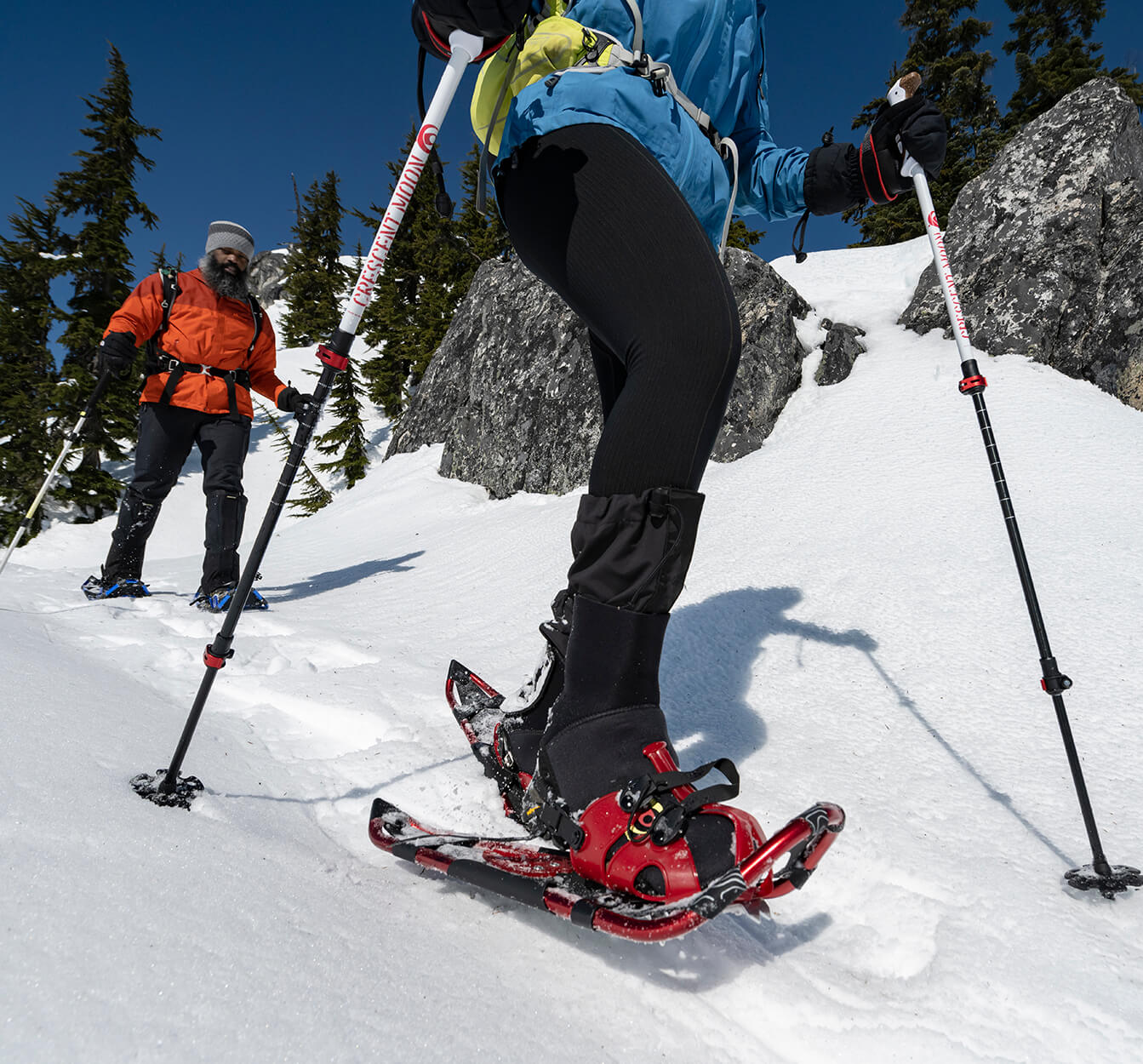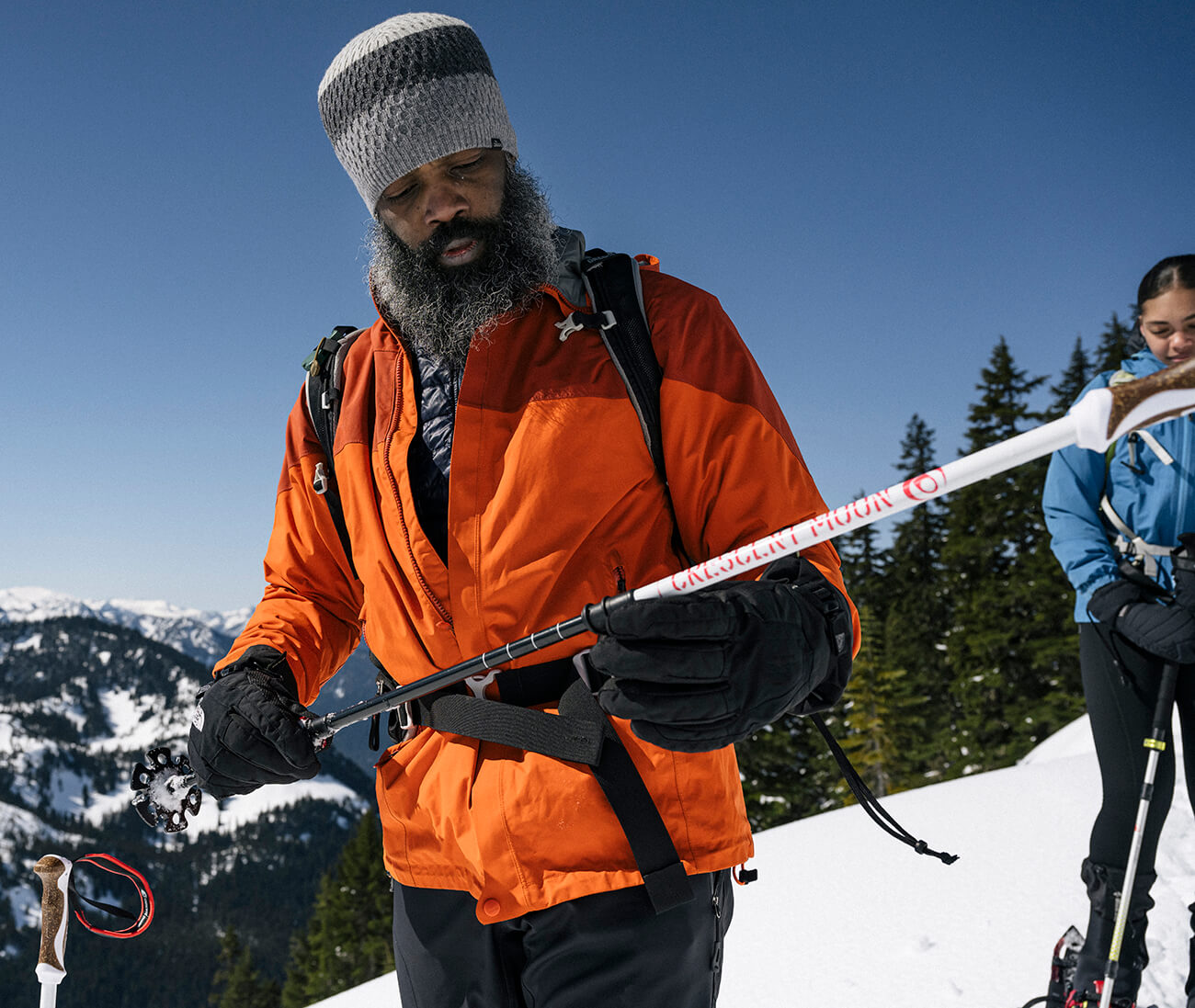Choosing the Right Trekking Poles: A Hiker's Guide
Posted by Crescent Moon on Apr 3rd 2024
Trekking poles are essential gear for hikers, backpackers, snowshoers, and outdoor enthusiasts of all kinds. They provide stability, reduce strain on your knees and joints, and can even help you maintain a faster pace on the trail. However, with so many options available on the market, choosing the right trekking poles can be overwhelming. Here are some key factors to consider when selecting the perfect pair for your adventures.
1. Pole Material
Trekking poles are typically made from either aluminum or carbon fiber. Aluminum poles are durable, more affordable, and offer better strength, making them ideal for rugged terrain. On the other hand, carbon fiber poles are lighter and absorb more vibration, making them more comfortable for long hikes. Consider your budget and the type of terrain you'll be trekking on when choosing between these materials.
2. Weight
The weight of your trekking poles can significantly impact your hiking experience, especially on long treks. Lightweight poles are generally more comfortable to carry and can help reduce fatigue. However, lighter poles may sacrifice some durability, so it's essential to strike a balance between weight and durability based on your hiking needs.
3. Adjustability
Most trekking poles are adjustable in length, allowing you to customize them to your height and the terrain. Look for poles with easy-to-use adjustment mechanisms, such as flick locks or twist locks, that can be adjusted quickly on the trail. Adjustable poles are versatile and can be shortened for uphill climbs and lengthened for downhill descents.
4. Grip and Wrist Straps
The grip of your trekking poles should feel comfortable in your hand and provide a secure hold, even when wet. Look for ergonomic grips made from materials like cork or foam, which are comfortable and absorb sweat. Additionally, adjustable wrist straps can help reduce strain on your wrists and improve stability, so ensure they are padded and adjustable for a comfortable fit.
5. Tip Design
Trekking pole tips come in various designs, including carbide tips for rocky terrain, rubber tips for hard surfaces like pavement, and snow baskets for winter hiking. Consider the type of terrain you'll be hiking on most frequently and choose poles with interchangeable tips for added versatility.
6. Price
Trekking poles can range from budget-friendly options to high-end, premium models. Consider how often you'll be using your poles and the type of terrain you'll be hiking on when setting your budget. While a more expensive pair may offer additional features and durability, a budget-friendly pair can still provide excellent performance for casual hikers.
In conclusion, choosing the right trekking poles is essential for a comfortable and enjoyable hiking experience. Consider factors such as material, weight, adjustability, grip, tip design, shock absorption, and price when selecting your poles. Crescent Moon has the perfect pair for your needs, you'll be well-equipped to tackle any trail that comes your way.
Crescent Moon
Check out all of our foam snowshoes, aluminum snowshoes and snowshoe accessories.


